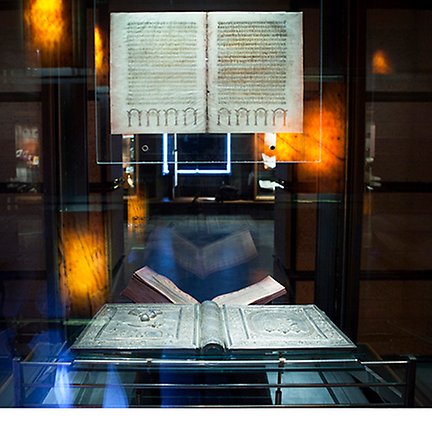Codex argenteus

Codex argenteus is a unique handwritten book and the main source of what we know about the now extinct Gothic language. The book is considered Sweden’s most precious literary treasure and is one of the world’s most famous manuscripts. It was added to the UNESCO Memory of the World register in 2011.
From the 6th century
Codex argenteus was written by hand in gold and silver ink on purple parchment in Italy in the early 6th century. It is thought to have originally belonged to Theodoric the Great, Emperor of the Western Roman Empire in the 5th century. It was made as a lavish symbol of the status of the emperor and the empire.
Written in Gothic
Today, both the Gothic language and the Gothic people have been absorbed into other languages and peoples, with only a few Gothic texts preserved. The longest surviving text is Codex argenteus, which gives it a particular importance in terms of our understanding of Gothic and the Goths themselves. Through Gothic, we can also learn more about other languages related to Gothic, such as Swedish, German and English.
Contains the four Gospels
Despite its name, Codex argenteus is not a complete Bible, rather it contains the four Gospels – four accounts of the life, death and resurrection of Jesus.
Donated to Uppsala University Library in the 17th century
Many pages have disappeared during Codex Argenteus’s eventful 1,000-year journey through Europe. It originally consisted of at least 336 pages. Of these, 187 are now held in Uppsala. In 1669, Codex argenteus was acquired by Uppsala University Library as a gift from Chancellor Magnus Gabriel De la Gardie, and has remained here ever since.

%20c_592066-l_3-k_imagepuff.jpg)


